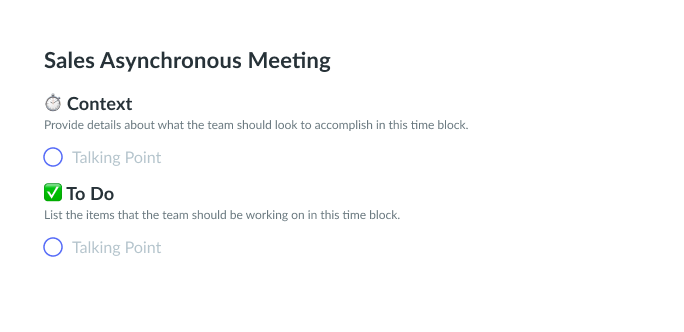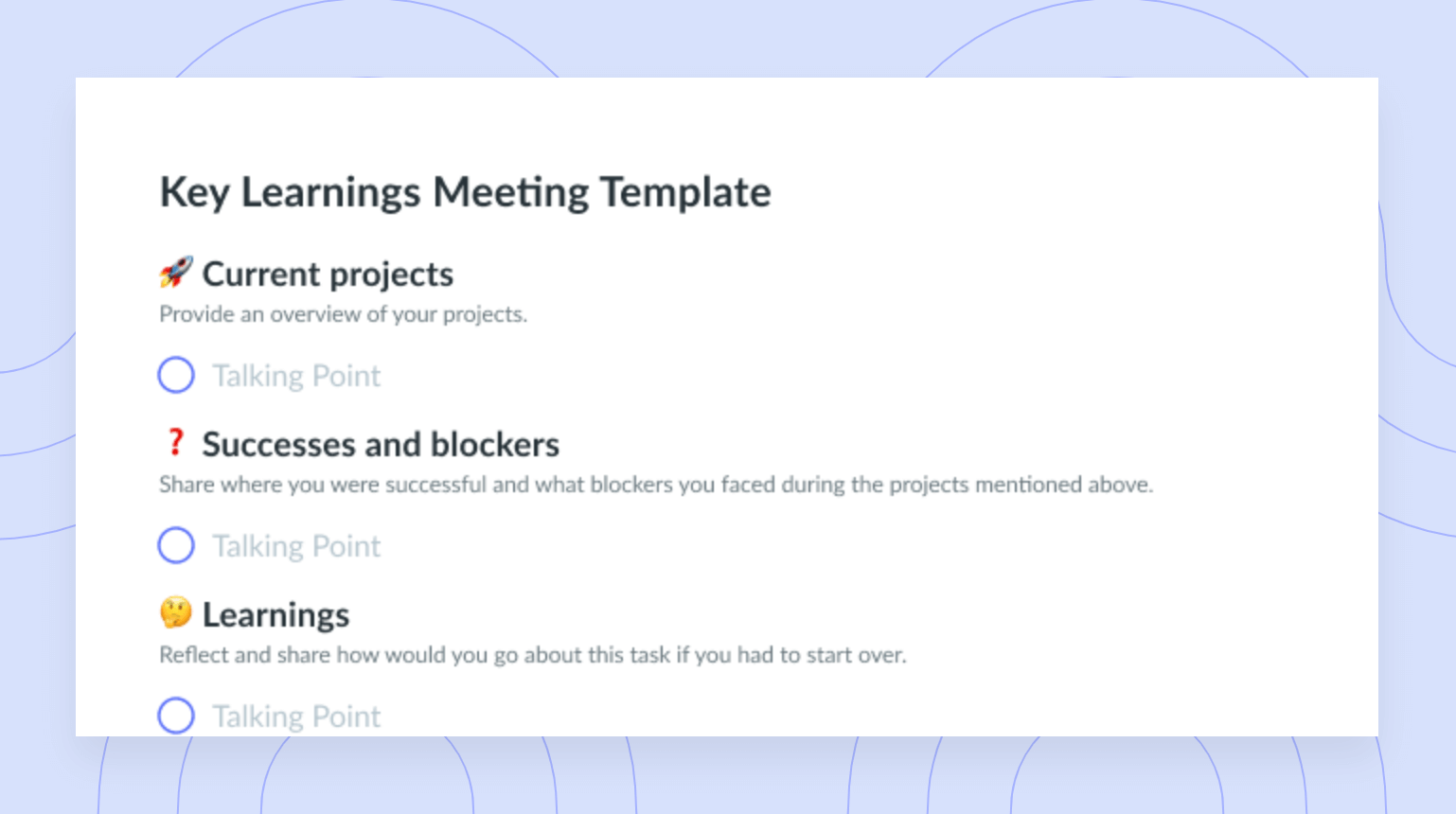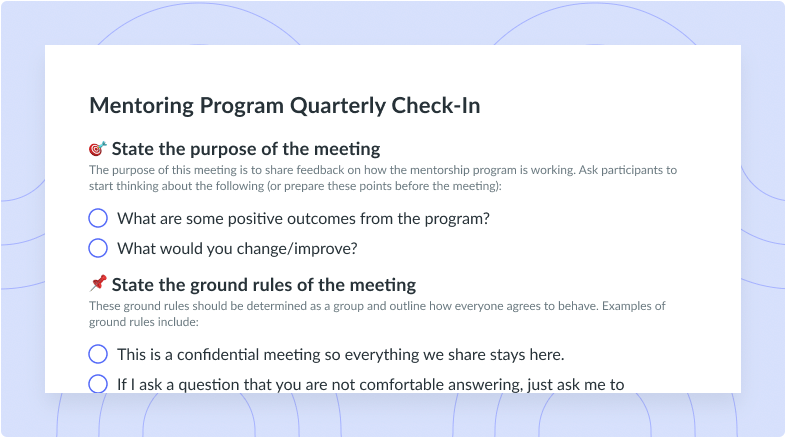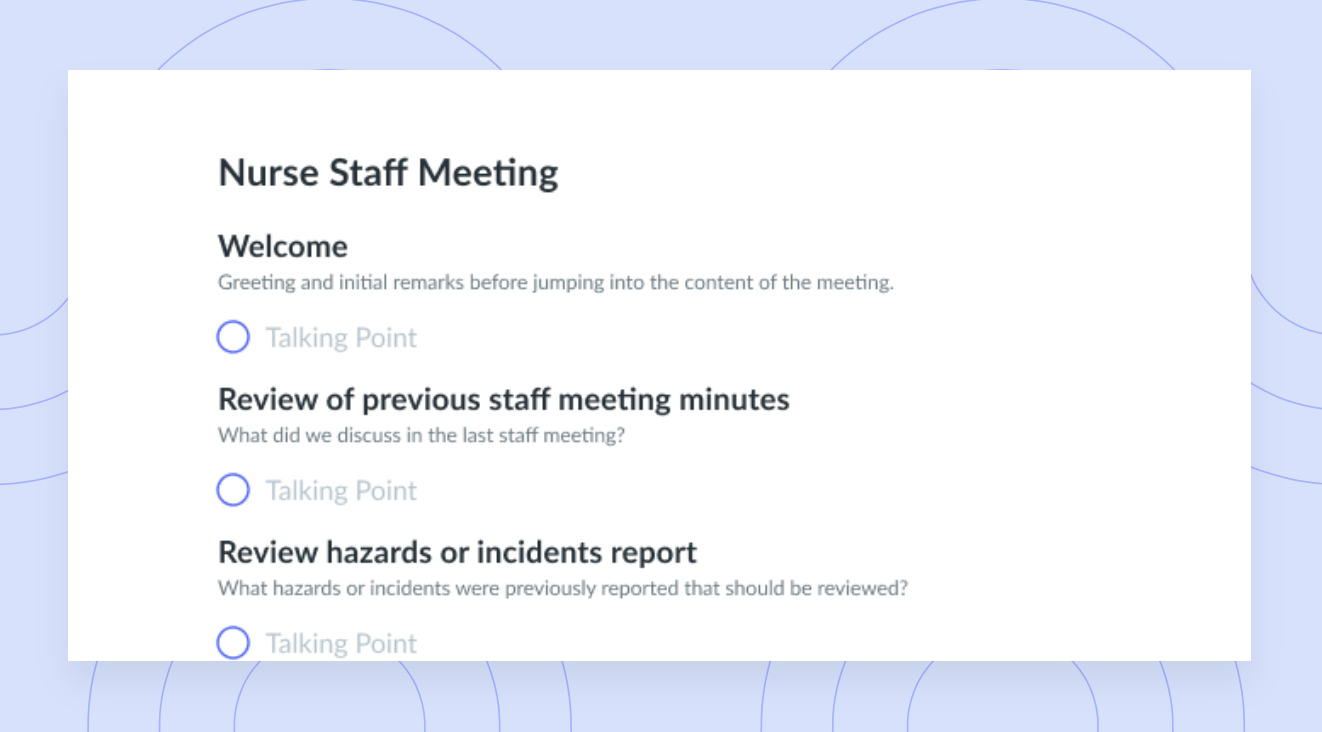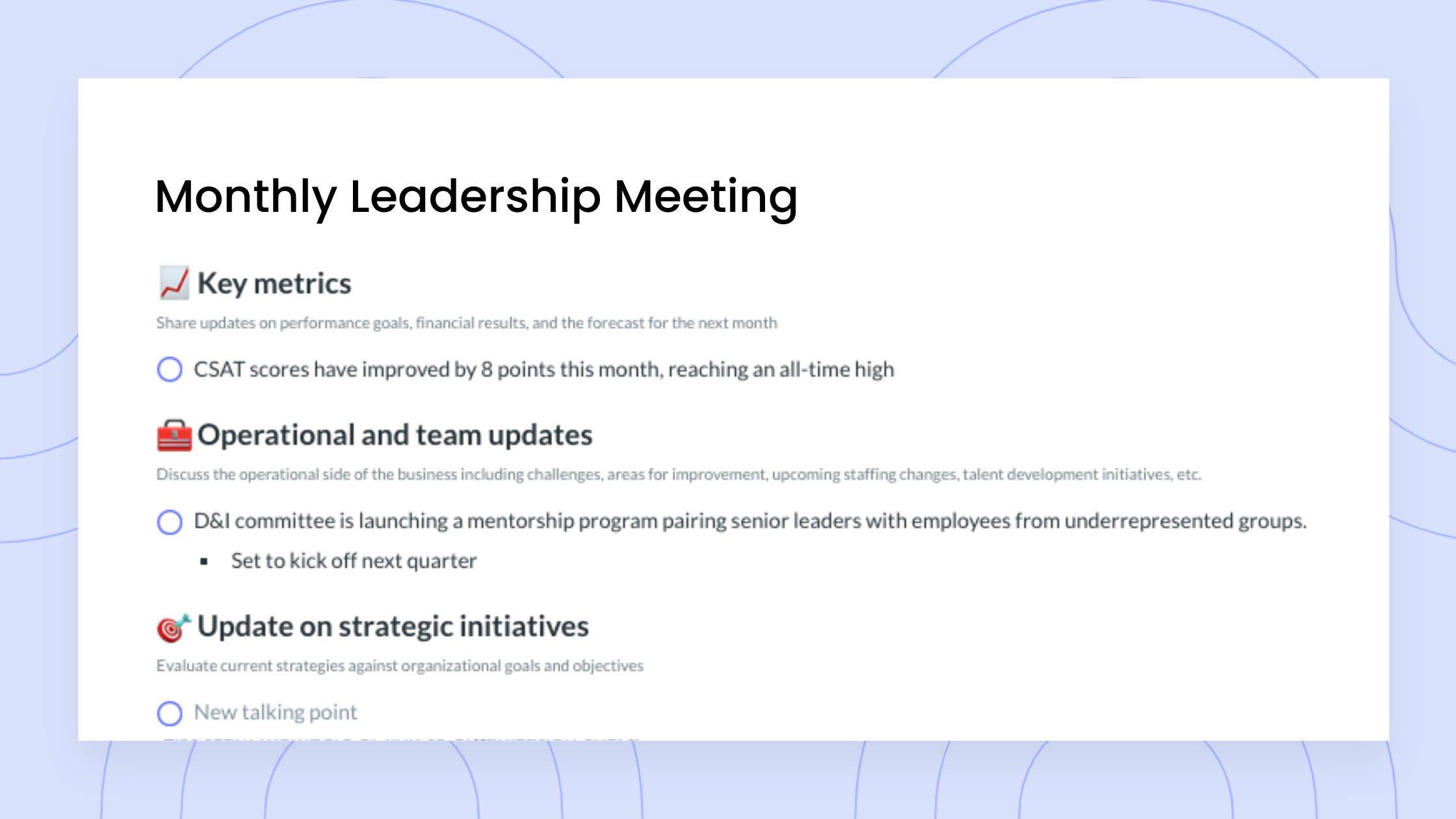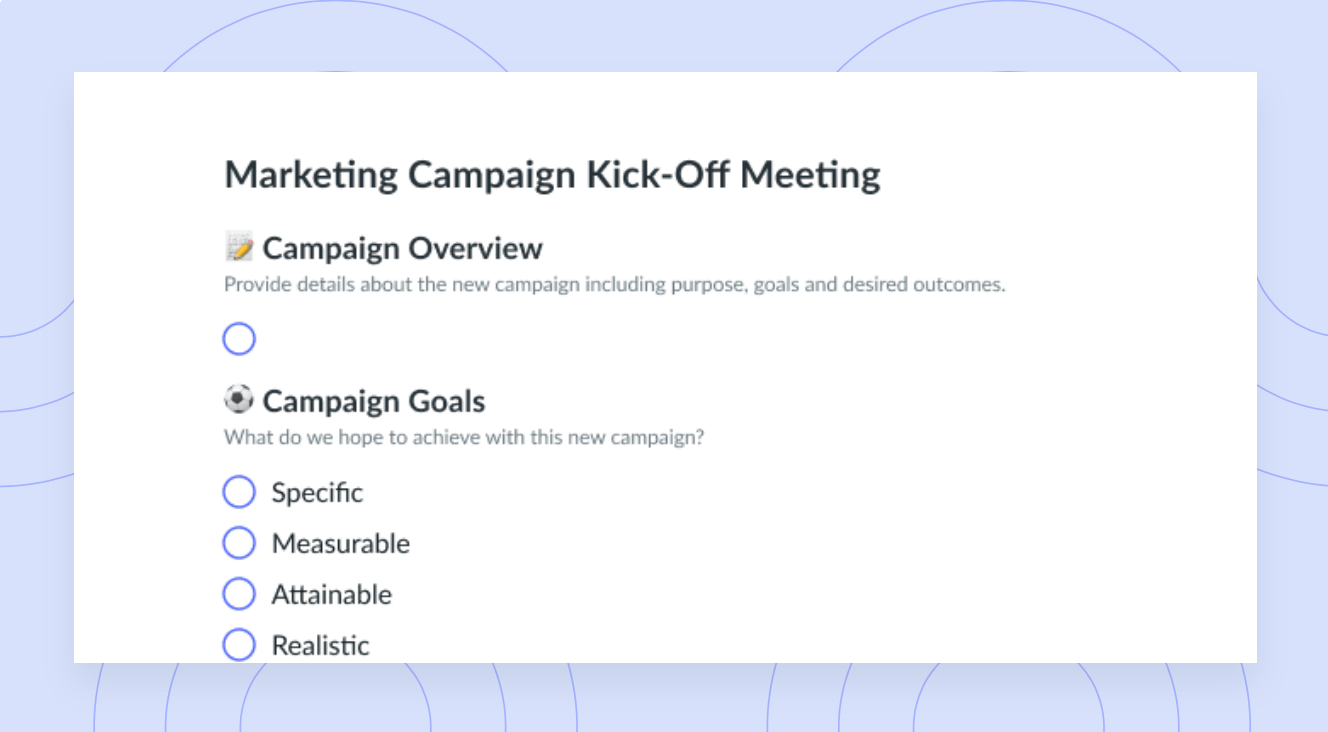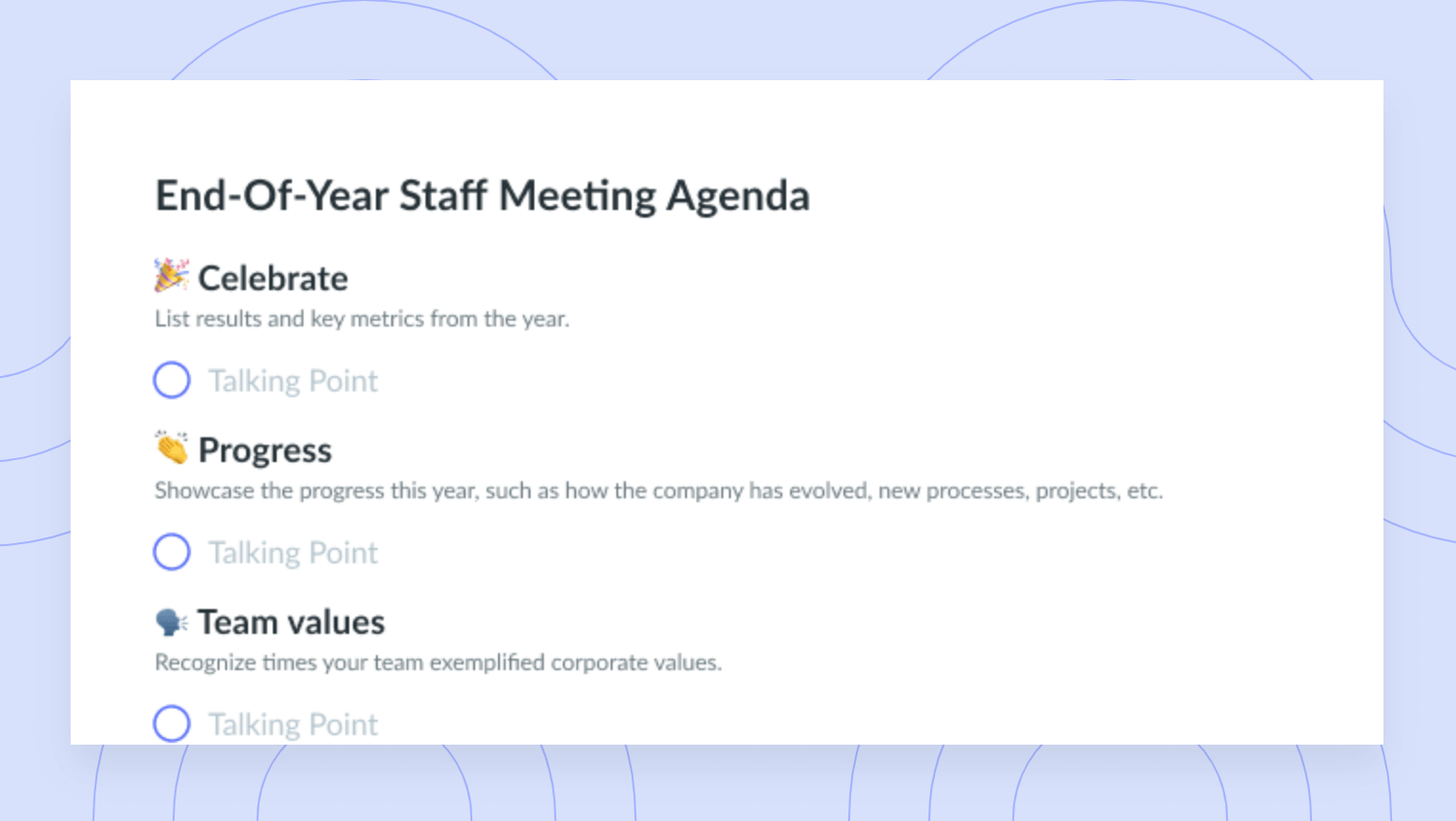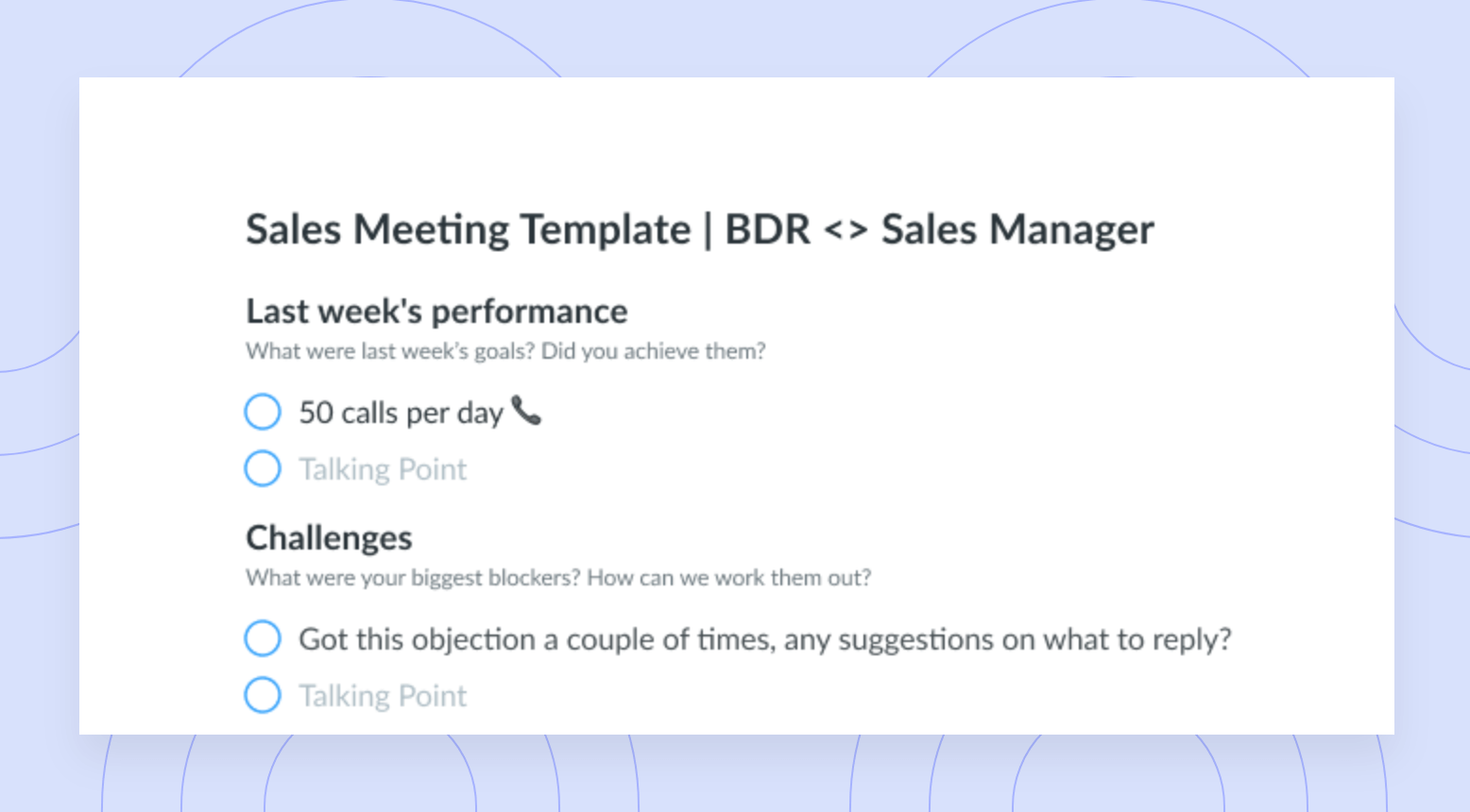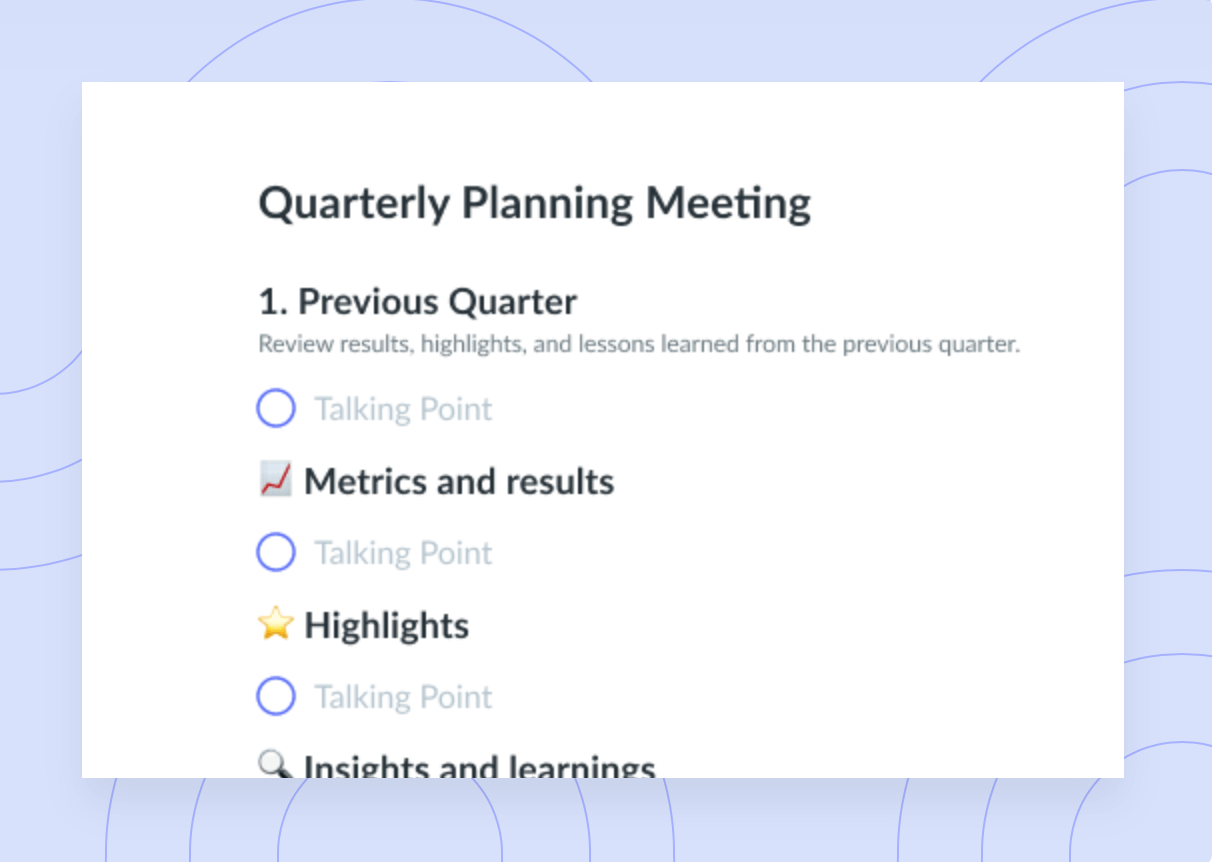
Sales Asynchronous Meeting Template
Get this templateUse this sales asynchronus meeting template to support deliberate dialogue, allowing your sales team to be more creative and form stronger bonds.


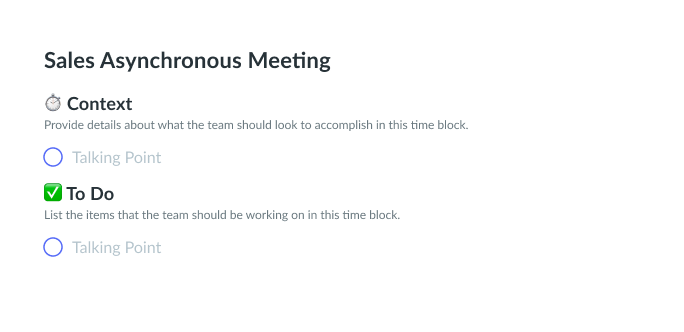

Asynchronous sales meetings overview
What are asynchronous sales meetings?
Asynchronous sales meetings are meetings that occur between members of the sales team asynchronously. Meeting asynchronously simply means to communicate through a third-party tool or platform like Slack. Instead of expecting team members to gather and chat in real-time, managers or leaders encourage team members to respond asynchronously at a time that works for them. This meeting format works particularly well if your teammates are dispersed across different time zones or if you wish to provide your teammates with more time for deep work.
What is the difference between synchronous and asynchronous meetings?
The difference between meeting synchronously and asynchronously is that synchronous meetings occur in real-time, whereas asynchronous meetings don’t. There are pros and cons to both, and each format aims to serve a different purpose. If you’re looking for face-to-face time with your teammates, you may want to meet synchronously. If you’re looking for quick updates and don’t want to interrupt your team’s workflow, it’s best to meet asynchronously.
What is the purpose of a sales meeting?
Whether you choose to meet synchronously or asynchronously, the principles of a sales meeting remain the same. Generally, sales meetings are gatherings between sales team members or leadership and occur to share updates and align team members. Team members may discuss sales policies and procedures, incentives, sales goals and targets, or any obstacles or hurdles that may be preventing them from doing their jobs.
How long and frequent should asynchronous sales meetings be?
Asynchronous sales meetings are for internal attendees only and are meant to provide sales team members with the information they need to do their jobs. The frequency and length of your sales meetings largely depend on what’s going on with your sales team. If you wish to conduct your sales standups asynchronously, these meetings would occur daily and you would most likely provide your teammates with a certain window in which they can respond and provide their updates.
While the frequency and longevity of your asynchronous sales meetings may vary, it’s important to create a regular cadence. Creating a regular cadence will ensure all team members are well-informed and prepared for your next meeting.
How to use an asynchronous sales meeting agenda template
Hosting asynchronous sales meetings is an excellent way to boost efficiency and save time. If your sales team members don’t have to take time out of their busy schedules to meet in real time, they’ll have more time for uninterrupted deep work. Luckily, Fellow makes the process of running effective, asynchronous sales meetings a breeze.
First, you’ll need to create a recurring calendar event and add everyone on your sales team. After the event has been created in Fellow, you can navigate to the event and set a template for your stream so your team can easily add any relevant talking points and prepare for the meeting. You can create your own template or choose from one of many fellow templates that are ready to go. If you choose a premade template, you can customize it to your needs and hit the ground running. Simply secure a template, customize it, and bring it to life in your next asynchronous sales meeting!
What’s inside this Sales Asynchronous Meeting Template:
Leveraging an asynchronous sales meeting agenda template is a quick and easy way to create a deliberate dialogue that unblocks and empowers your sales team members. If you want your team members to collaborate and hit their sales goals, you need to prioritize checking in and hosting regular meetings. Leveraging one of our asynchronous sales meeting agenda templates will ensure you’re well-equipped and ready to host your next asynchronous sales meeting.
Ultimately, the conversations in these meetings should be structured around two main points: context and to do.
1 ⏱️ Context
Provide details about what the team should look to accomplish in this time block.
This section of the asynchronous meeting agenda template is meant to provide more details about what the team should aim to accomplish within a certain time block. This section is where you can get granular and provide details or any additional information that your team members may need to proceed or succeed in their roles.
2 ✅ To Do
List the items that the team should be working on in this time block.
This section of the asynchronous meeting agenda template is where you’ll list all the items that your team should be working on during the same time block. This may include providing updates, completing tasks, or collaborating on upcoming projects. This section of the asynchronous meeting agenda template can also be used to hold your teammates accountable.

